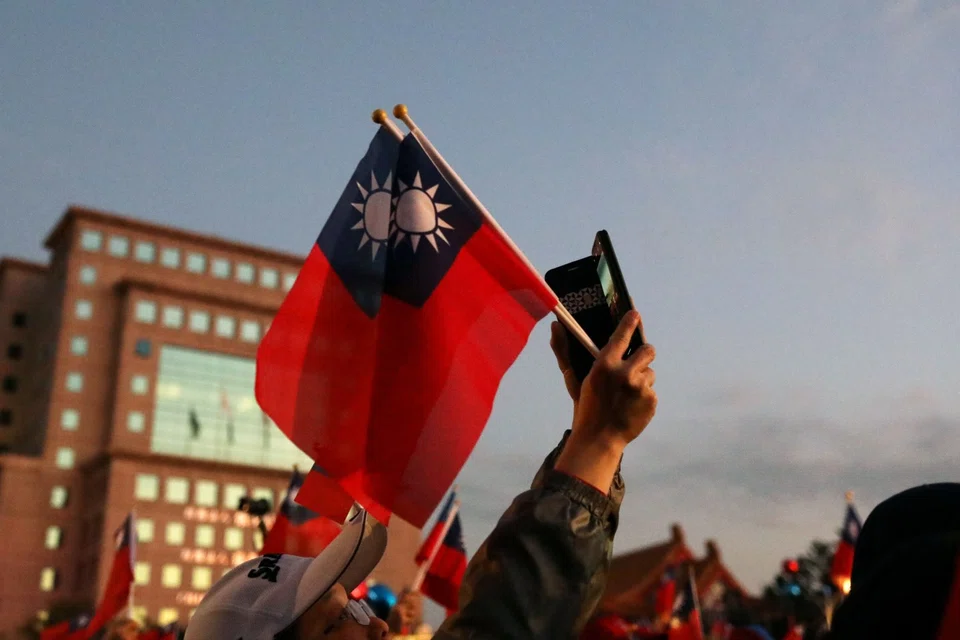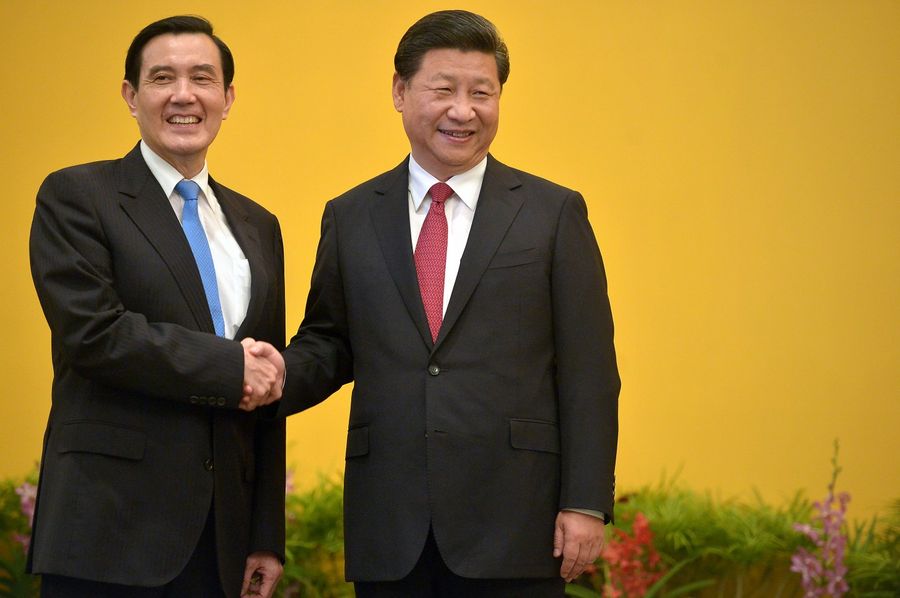The Taiwan Strait: Hit the brakes now before it is too late

The coronavirus that broke out in Wuhan and spread to Taiwan could have been an opportunity to break the stalemate in cross-strait relations; instead, it highlights deep distrust and a widening gap between Taiwan and mainland China. Recent developments do not bode well for cross-strait relations in the years ahead.
As donated medical supplies were rushed in to Wuhan from Japan, the Philippines, the US, India, the UK and others, Taiwan's ill-timed export ban of surgical and N95 masks has been criticised by many as a cold-blooded move. Meanwhile, the Taiwanese government and its supporters are renewing their condemnation of Beijing for blocking Taiwan's participation in the World Health Organisation (WHO). The WHO, a specialised agency of the United Nations, requires statehood for membership and continues to exclude Taiwan. During the Ma Ying-jeou administration, Taiwan was able to attend the World Health Assembly, the global health forum of the WHO, but its participation seems unlikely under the current circumstances.
Post-election rhetoric
The boisterous presidential election of the Republic of China (ROC) ended on 11 January 2020, with the incumbent Tsai Ing-wen winning a second term. Cross-strait relations dipped to a historic low after May 2016 when Tsai took office. In her re-election victory speech, Tsai expressed hope to improve relations with Beijing, based on four principles: peace, parity, democracy and dialogue. A breakthrough in cross-strait relations seems to be a major goal she wishes to achieve during her second term.

However, the prospect for a cross-strait dialogue does not look promising. President Tsai and many people in Taiwan believe that Taiwan's future must be determined by the 23 million people on the island. In response, China's Taiwan Affairs Office spokesman insisted that Taiwan's future should be determined by all the 1.4 billion Chinese people, including those in Taiwan. Such a view may sound outlandish in today's Taiwan but appears to enjoy widespread support on the mainland.
In the delicate Taiwan-China relationship, semantics matters a lot.
In an exclusive interview with the BBC shortly after her re-election, Tsai elaborated on her view of cross-strait relations. When asked by the BBC's John Sudworth if she favoured Taiwanese independence, she said, "We don't have a need to declare ourselves an independent state. We are an independent country already and we call ourselves the Republic of China (Taiwan)."
The importance of semantics
What is unclear is her definition of the ROC. Does she truly believe in the ROC or just use it as a cover for a "Republic of Taiwan" that many of her supporters have strived to establish? She promised to maintain the status quo and urged Beijing to face the reality of Taiwan's independence. Her "status quo" is obviously different from Beijing's; it is apparently also different from that of her predecessor Ma. One wonders whether her "ROC Taiwan" is the same as the ROC Ma referred to, which was founded on the mainland in 1912 and moved to Taiwan in 1949 after losing the Chinese Civil War. The key is whether she believes Taiwan and mainland China are parts of the same country, based on the ROC Constitution.
From Beijing's perspective, if the two sides are already two separate countries, what's the point of talking to each other?
In the delicate Taiwan-China relationship, semantics matters a lot. When Tsai says Taiwan is already an independent country, Beijing believes it's a departure from the "one China" principle that formed the foundation for cross-strait interactions in the past. Interestingly, when Ma said similar things, Beijing never challenged him. The difference is Beijing trusted Ma but does not trust Tsai.
The two sides can indeed talk to each other on the basis of parity, as evidenced by the November 2015 meeting in Singapore between Ma Ying-jeou and Xi Jinping. To avoid any hint of inequality, the two men simply called each other Mr. Xi and Mr. Ma during the historic meeting. The summit took place because Ma defined cross-strait relations as relations between Taiwan and the mainland within the ROC's one-China framework.

Tsai's definition of cross-strait relations is apparently based on her belief that Taiwan and China are two separate countries, similar to the 1999 Democratic Progressive Party (DPP) Resolution on Taiwan's Future, which reads: "Taiwan is a sovereign and independent country. Any change in the independent status quo must be decided by all the residence of Taiwan by means of plebiscite."
It is virtually impossible to expect Beijing to talk to Tsai if she insists on Taiwan's independent status from China. From Beijing's perspective, if the two sides are already two separate countries, what's the point of talking to each other? Hawks in Beijing may even argue that using force to bring Taiwan back to the motherland is the only option left.
Changing tides
To Beijing's disappointment, Tsai's view on cross-strait relations seems to enjoy the support of the majority of people in Taiwan. The tide has turned. Only a diminishing number of people in Taiwan still consider themselves as Chinese or favour unification with China.
The Chinese Nationalist Party or the Kuomintang (KMT) has been the persistent and proud defender of the ROC. Ironically, during the 2020 election, Tsai successfully grabbed the discursive power and projected herself as the protector of the ROC, putting the KMT on the defensive. The KMT will be compelled to revamp its mainland policy since many believe it lost the recent election due to its pro-China stance. Already, some members of the KMT are pondering ways to move forward, such as ditching the so-called "1992 Consensus" or removing "Chinese" from the Party's name. One should not be surprised if the KMT's mainland policy becomes similar to the DPP's in order to survive in Taiwan.
In the English version, Myanmar states that Taiwan, Tibet and Xinjiang are inalienable parts of China, but the Chinese version states that Myanmar considers Taiwan, Tibet and Xinjiang to be inseparable parts of the People's Republic of China.
On the other hand, instead of reflecting upon what has gone wrong with its Taiwan policy, there is still no soul-searching in Beijing, and China appears to have hardened its position. At the Taiwan Affairs Conference organised by the Communist Party central committee following Taiwan's election, Wang Yang, a top leader who handles cross-strait relations, repeated the Party line of sticking to the 1992 Consensus and the "one country, two systems" model while acknowledging cross-strait situations are becoming more complex and grim.
Notably, at the conclusion of President Xi's recent visit to Myanmar, China and Myanmar issued a joint statement, reaffirming the one-China principle. In the English version, Myanmar states that Taiwan, Tibet and Xinjiang are inalienable parts of China, but the Chinese version states that Myanmar considers Taiwan, Tibet and Xinjiang to be inseparable parts of the People's Republic of China. It is unclear whether this is a translation blunder or an intentional signal of Beijing's retreat from its past position that Taiwan is a part of "China", an entity to be formed by both sides of the Taiwan Strait upon reunification.

Bolstered by her re-election victory and international support, Tsai is unlikely to concede to the one-China principle during her second term. Meanwhile, Xi has no room for compromise given strong nationalism in China and his stated goal of realising the "Chinese Dream" of national rejuvenation by mid-century. Are the two sides on a collision course? If so, leaders on both sides must hit the brakes now before it is too late.
